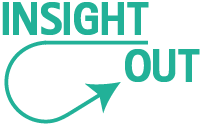Hi Everyone,
Thoughts to share today are prompted by a book that I am reading. I love reading fiction but I’m not a great one for reading ‘text’ books: my learning style is a bit too ‘experiential” for that! I’ve been set the challenge as I am part of a couple of colleague groups with whom I spend really valuable time stretching my thinking, and for one of them we are reading “Neuroscience for Coaches” by Amy Brann.
True to form I am finding it quite hard going, but insightful too so it is worth the effort.
One idea that I have known for ever but has been crystallised in this book is that to get something to be different we might need to give ourselves a little ‘nudge’.
While I was at the hairdressers yesterday I noticed how the stylist reached for things automatically, by habit, often without even looking. And we often make choices about what we do the same way, maybe not even realising we are making a choice. By moving an object to somewhere different we can use the jolt that provides as a reminder that we might want to choose differently, to give us a nudge.
I have been using the nudge idea for many years when working with people, (and certainly came across it when studying Neuro Linguistic Programming) and during that time it has morphed itself into practical actions that I encourage clients to explore as they help themselves focus on the choices that they want to make. The ideas they come up with are often small things, like moving the clock in their office so that every time they look at where it used to be they are reminded of the thing they want to be doing differently; or having a small lion picture in their top drawer which they see every time they reach for a pen and reminds them that they are going to be brave; or playing upbeat music in the car before they get to work (rather than the news) so that their energy levels are different when they arrive; or leaving a note on their desk with 3 things that have gone well and what they want to do even better tomorrow written on it, so that the next morning they are reminded of the good stuff and ready to deal with the challenges ahead.
Small things that have helped them remember to choose differently. But what I didn’t realise until I read the neuroscience book is that this kind of nudging is something proper! Because in fact ‘nudging’ is a real, brain worky neuroscience thing, and is part of ‘choice architecture’, which Brann describes as:
…the process of affecting outcomes by influencing decisions
There is lots of stuff in the book about the science behind it, neural circuits and all that. But the bottom line is that it is hard to change what we do because that old habitual behaviour is still switched on. To overcome this we need to give some support to the effortful and intentional bit of our brain, and that’s what nudges do for us.
Brann talks about an experiment at Schiphol Airport in Amsterdam (picture from appollonsky.me: sorry it’s a bit yucky if like me you’re not a fan of men’s loos!) where they put a sticker of a fly in the urinals and managed to “reduce spillage, due to bad aiming, by 80%”. Now that’s a worthy nudge!!
For me there is something a little subversive about the idea of nudges when we are not aware of them (product placement in films for example) but the official research hints that that’s when they work best and they don’t do so well if we know about them. I would like to disagree: nudges that we are aware of still work, as I am living proof right now! As always I am eating whilst I type this (we have explored before that eating seems to help my thinking) but I have nudged myself away from biscuits by leaving those in the kitchen and putting a bag of sultanas on my desk. I nudged myself away from wine (last time’s blog) by taking it out of the fridge and replacing it with the cordial bottle. These and many other nudges have worked for me, and I know from conversations with many people that the nudges we knowingly create for ourselves are really helpful.
Its strange to realise that something you’ve been doing for years, that’s common sense and you know works, has a proper name and lots of brain science to back it up. I guess finding that out is the power of reading text books! If you haven’t tried deliberately nudging yourself before, then give it a go, and if you have then perhaps this is an opportunity to create nudges with the scientific knowledge that they help us turn off the habits we find unhelpful and enable the intentional bit of our brain to make the choices that we want to.
Now then, I wonder if I need to add ‘choice architect’ to my list of skills on Linked In? Perhaps we all do??
Hope you have enjoyed this blog and found it useful. Thank you for your interest in the Choose You Project. Several of you have encouraged me to run the gauntlet of spam and add a comments box to the blog, so here it is! It’s great to get your comments and this way everyone else can see them too, so please do add your thoughts, perhaps particularly this week sharing the nudges you use that work for you.
Jenny
